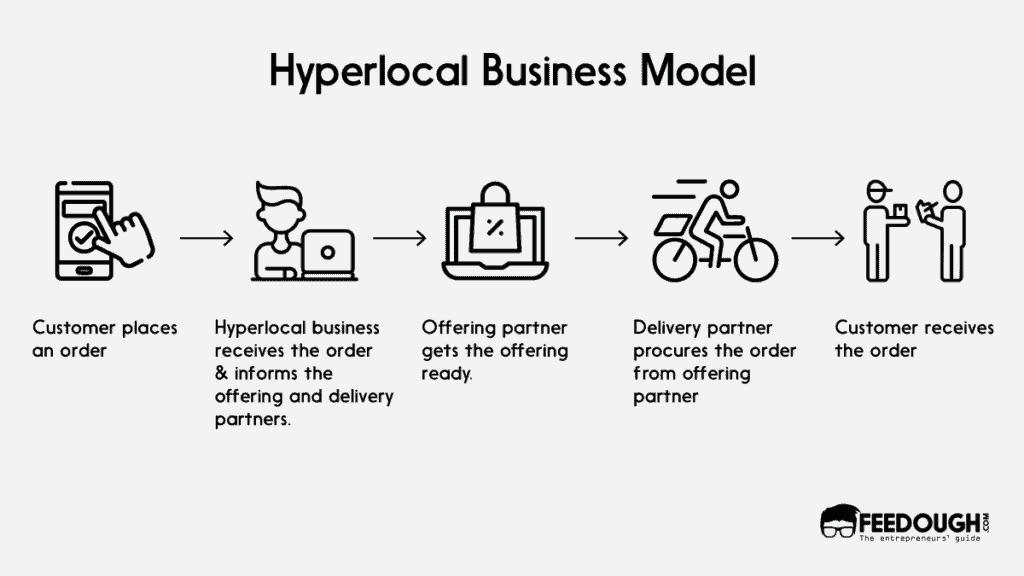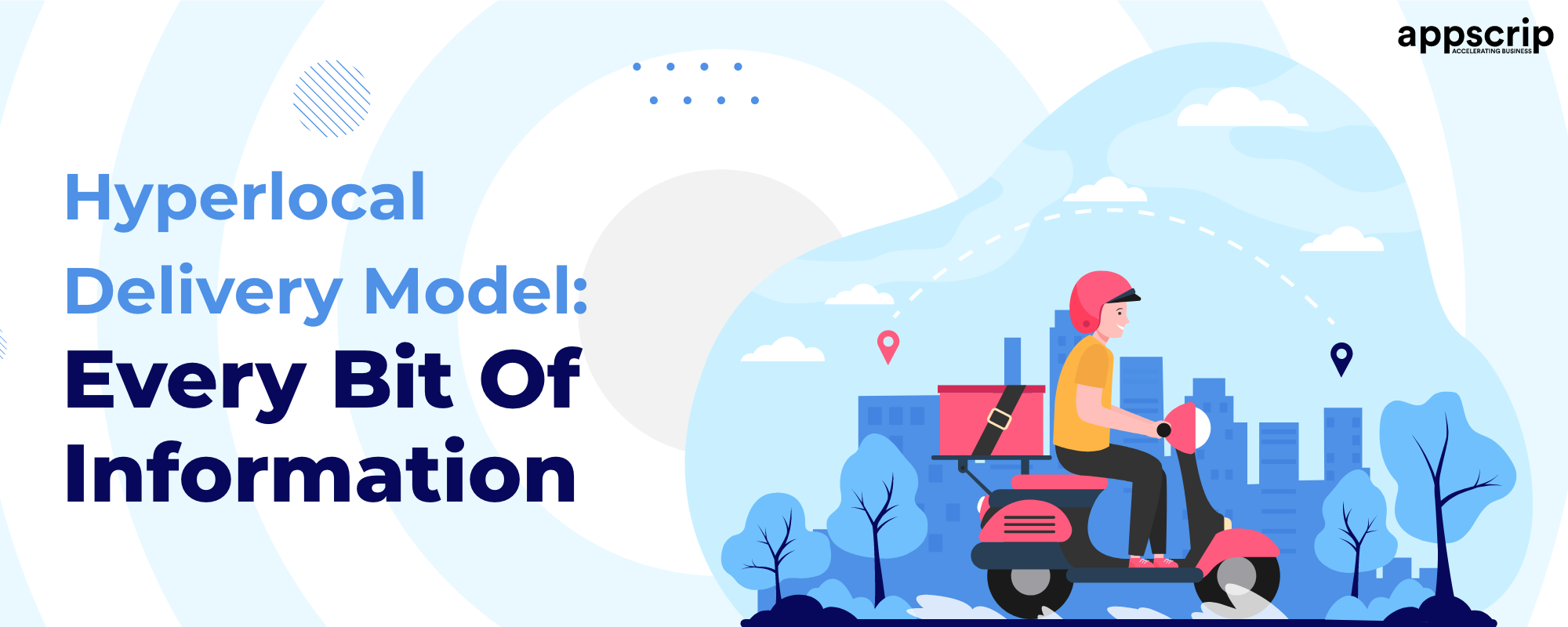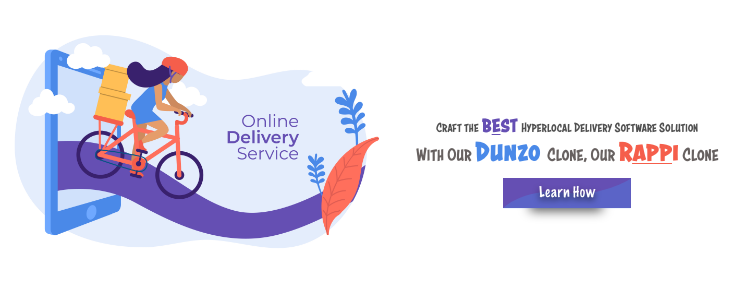Couple of years back, when you needed to purchase grocery or medicines, it was quite a task.
You had to get ready and travel to the shop physically. Then you had to stand in long queues to get those items from the grocery and medical stores.
You had to spend copious amount of time in queues even for buying food from cafes and restaurants. However, the scenario these days has completely different with all the convenience being presented to consumers on a platter.
The hyperlocal delivery model is all about convenience to consumers, where nearly every commodity is delivered to their doorstep. This might sound surreal, but this is an important ingredient that holds the future in the consumer market.
The primary aim of the hyperlocal delivery model is to create a consumer-friendly local ecosystem in which goods and services are delivered at their location on every demand.
This business model is expected to grow by a mammoth $452 million in the coming years. This business model’s CAGR or Compound Annual Growth Rate during the revenue growth period is a whopping 18%. Let us know more about the hyperlocal delivery model in detail.

Hyperlocal: Definition
Hyperlocal is also known as absolutely local, which means a well-defined geographical area that is awfully specific. Hyperlocal mainly targets particular locations and communities based on two key factors: geography and time. For example, a local neighborhood or a particular area in a town can be hyperlocal.
The main reason for hyperlocal working is a personalized and individual approach to service clients. With proper direction and technological injection, hyperlocal can work extremely efficiently.
Hyperlocal Delivery Model
The hyperlocal delivery model, also commonly referred to as the micro-marketplace, is a new business model that targets mainly geographically specific areas and local consumers within that region. The primary aim of this business model is to efficiently serve the demands of the consumers by bridging the gap between demand and supply.
They work with a vast network of suppliers or vendors who provide doorstep delivery services to consumers. The business model is based on the online mode, and the consumers are served through a local ecosystem.
In simple words, the consumer uses an online service aggregator platform to request a product or service. The aggregator acquires that particular product from the seller and then delivers it to the consumer. With the inception of e-commerce platforms, the hyperlocal business model has been grown to new heights.
The hyperlocal business platform has gained consumers’ trust by providing quality service at surprisingly fast speeds. Moreover, the inclusion of digital services has made the whole model even more efficient.
Here are some of the standard features of a hyperlocal delivery model
- It is a specific and personalized form of business that targets local consumers within a region.
- It targets a geographically distinct area where the demand for particular goods or services is high.
- With the help of modern technology, it serves the consumers both efficiently and effectively to improve quality of their lives.
- The specific proposition that this business model provides is the sourcing of good quality products to consumers at their doorsteps for maximum convenience.
Hyperlocal Delivery System
The hyperlocal delivery model works hand in hand with the existing and local markets to provide the best services. All these heads are connected within a single ecosystem where service aggregators take the orders from consumers, process them and procure the goods from local vendors.
Which is then delivered to the customer either by a third party agency or by a delivery agent of the vendor.
The main component of the delivery chain in a hyperlocal system is the vendors and subsequent delivery partners. They efficiently close the gap between the retail sectors and the consumers.
Businesses and organizations that fall under the hyperlocal category provide online platforms through which consumers can directly communicate their needs. This platform holds both inventory information depicting the stock of products and services available. The ordering platform through which the consumers can order ensures the delivery of the required product.
One of the main reasons the hyperlocal delivery model has gained immense popularity is its ability to generate considerable revenue and profit by catering to various other business models as well.
Hyperlocal vs Local
As discussed in the definition, hyperlocal refers to particular geographical locations or even particular communities. The scope of hyperlocal is considerably low but highly efficient.
On the contrary, local refers to a whole town or city where the scope is comparatively higher than hyperlocal hence the service efficiency also spreads out evenly.
Key and Tertiary Partners of a Hyperlocal Business
Here are some of the key and tertiary partners that every hyperlocal business needs to operate smoothly.
Offering Partners
This is the category that includes the local stores, manufacturing units, wholesalers, or retailers that directly fulfil the consumers’ orders. Hyperlocal businesses specifically procures goods from distributors for this category.
Delivery Partners
These include the delivery executives who deliver the goods to the consumers. They do not work directly as company employees and are under a separate payroll. This enables the executives to moonlight.
Thus they can work whenever they want to, this ultimately saves money for the organization.
Map API Providers
To deliver goods efficiently, hyperlocal businesses must partner with companies that provide maps and live location tracking through APIs (Application Programming Interface).
Platforms like Google provide these services that make delivering goods easy as they can provide an optimal route via route optimization.
Payment Processors
Hyperlocal businesses also need to partner with payment gateway or processor platforms to receive and disburse payment. Apart from paying and receiving payments, these platforms also ensure complete documentation of every transaction for easy reference.
Wrapping Up: Hyperlocal Delivery Model
Businesses have understood the need to provide value to their consumers due to the cut-throat competition in the market. Hence the need to upgrade their services and take the help of technology is mandatory for growth. Hyperlocal businesses are taking small yet steady steps to expand into the competitive retail market to make a name for themselves.
With all the help and advancements they are receiving, they will soon reach new heights and redefine the retail market and connect it with consumers.
After an Engineering degree and a Diploma in Management I devoted 16+ years working in the automotive industry. My innate skill and extreme passion in writing, encouraged me to adopt it up as a profession. I have been writing for more than 10+ years in the software industry. The 400+ blogs I published are informative, exhaustive and interesting to a professional and causal reader.










